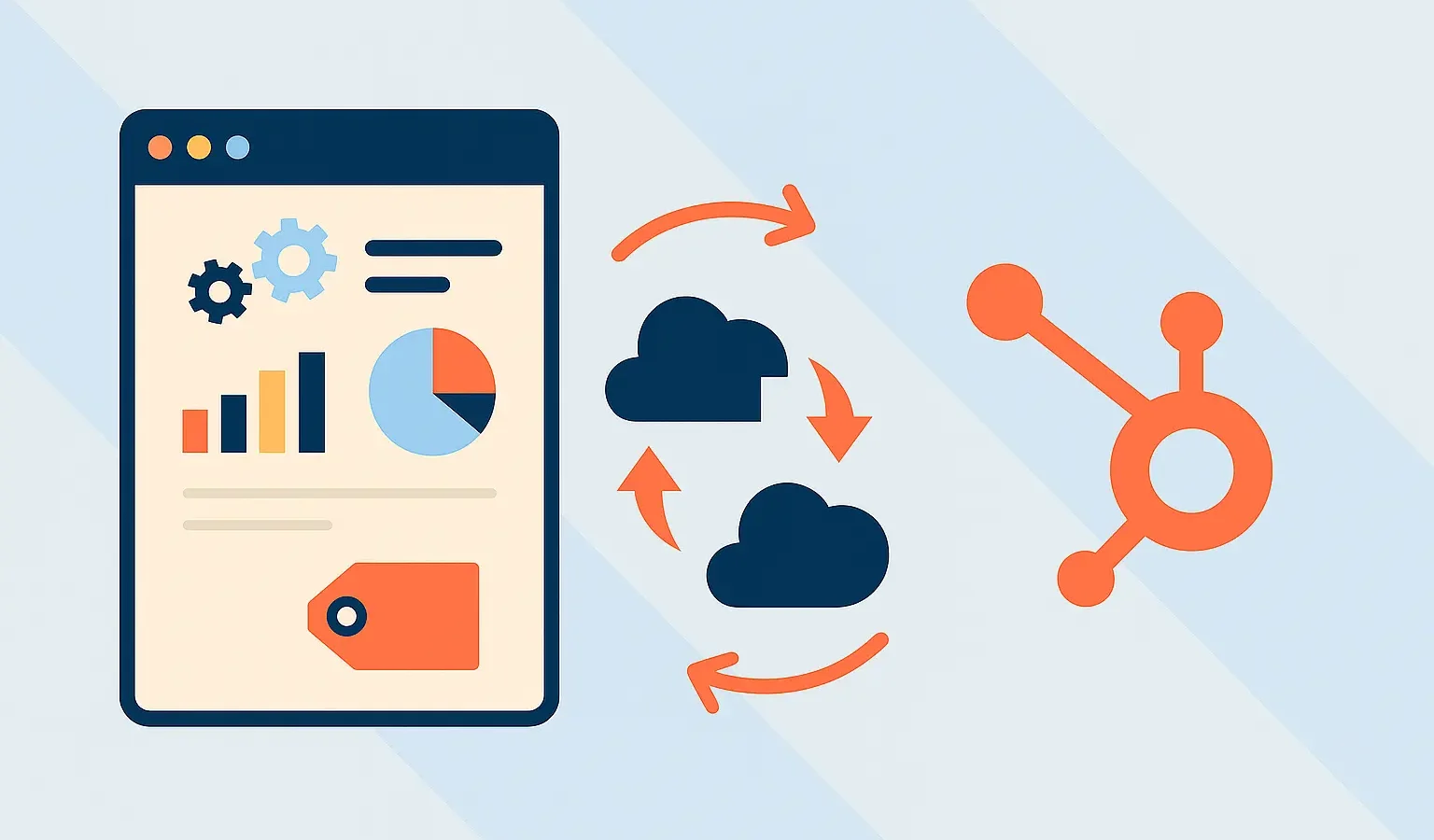Discover how syncing product data to HubSpot helps SaaS teams predict churn, convert active users into Product Qualified Leads (PQLs), and scale Product-Led Growth with smarter, proactive sales and support.
Key Takeaways
- Syncing product data to HubSpot bridges the gap between product usage and customer engagement.
- Product Qualified Leads (PQLs) drive faster, higher-quality conversions than traditional MQLs.
- HubSpot automations can trigger proactive outreach based on real-time usage behavior.
- Integrated data empowers support teams to act before customers churn.
- A unified data strategy is the backbone of Product-Led Growth (PLG).
Why Product-Led Growth Demands a Unified Data Strategy
In a Product-Led Growth world, your product is your best salesperson. But even the most intuitive software can’t drive growth alone. Without visibility into how customers actually use your product, sales and support teams operate in the dark.
Syncing product data to HubSpot eliminates that gap. It connects usage events (like logins, feature activations, or upgrades) with contact and deal records, giving your team a 360° view of engagement. When product, marketing, and customer data align, every interaction becomes smarter, faster, and more personal.
The Business Case: Why Syncing Product Data to HubSpot Fuels SaaS Growth
SaaS companies thrive on data-driven decisions. Integrating product insights with CRM activity is how you unlock the full potential of your go-to-market teams.
Traditional lead scoring often focuses on form fills and campaign interactions. But PLG companies know the real signal comes from what users do inside the product.
By syncing that behavior into HubSpot, you empower teams to:
- Identify Product Qualified Leads (PQLs), users who engage deeply with key features.
- Alert sales automatically when usage spikes or new seats are added.
- Give support visibility into friction points before they escalate.
- Build automated nurture paths tied to in-app milestones.
It’s no longer about guessing who’s ready to buy. It’s about seeing it happen in real time.
From Usage to Revenue: How to Turn Product Data into Product Qualified Leads (PQLs)
Understanding what makes a user “product-qualified” is the foundation of modern SaaS sales. PQLs show intent not by words but by action.
A PQL isn’t someone who just downloaded a whitepaper. It’s a user showing genuine engagement logging in frequently, using core features, inviting teammates, or upgrading their plan.
When you sync product data to HubSpot, you can create smart workflows that:
- Score users based on product behavior.
- Move them from free to paid pipelines automatically.
- Trigger alerts for sales reps when “aha moments” happen.
This is how modern SaaS companies scale not by chasing leads, but by nurturing usage momentum.
Step-by-Step: How to Sync Product Usage Data to HubSpot the Right Way
Syncing data isn’t just a technical task it’s a strategic exercise in mapping the customer journey to real behaviors.
Here’s how to do it effectively:
- Map Your Product Events. Identify key moments logins, feature activations, or team invites.
- Select Your Integration Method. Use HubSpot APIs, middleware, or an integration partner like Integrate IQ for a custom, managed sync.
- Create HubSpot Custom Objects. Represent users, accounts, or usage metrics that aren’t native to HubSpot.
- Automate Workflows. Use triggers like “used X feature 3 times” to alert sales or initiate onboarding flows.
- Validate and Monitor. Ensure data freshness and test regularly to prevent pipeline errors.
With the right setup, your CRM becomes a live reflection of your product ecosystem.
Automate Proactive Sales and Support with HubSpot Workflows
Once data flows seamlessly, automation turns insights into action. HubSpot’s workflows allow every team to respond instantly to user behavior.
Use automation to:
- Alert sales when usage surges or a trial nears conversion.
- Notify support when engagement drops below a threshold.
- Send tailored messages triggered by in-app activity.
- Assign playbooks for onboarding, renewals, or upsells.
Real Results: How Synced Product Data Transforms Teams from Reactive to Proactive
A leading SaaS platform once relied on periodic surveys to gauge user satisfaction. After integrating their product data into HubSpot, they saw a 40% reduction in churn.
Why? Because their success team could now spot users struggling with adoption, sales could upsell active accounts at the perfect time, and marketing could segment campaigns by behavior all powered by one unified dataset.
That’s the difference between reacting to churn and predicting success.
What’s Next: HubSpot’s Role in the Future of Product-Led Growth
PLG is evolving fast and HubSpot is emerging as its data nerve center. The next era is about intelligence, not just integration.
HubSpot’s AI and automation features now analyze product usage trends to forecast expansion opportunities and churn risks. Soon, integrations won’t just sync data they’ll interpret it, helping teams prioritize accounts and personalize outreach automatically.
4 Common Mistakes When You Sync Product Data to HubSpot
Even great integrations can fall short if strategy and structure aren’t aligned. Avoid these common errors to keep your sync clean and impactful.
- Syncing everything. More isn’t always better, focus on actionable events.
- Skipping alignment. Ensure sales, success, and product teams agree on what defines a PQL.
- Neglecting data quality. Dirty or duplicate data breaks automation.
- Ignoring context. Numbers without behavioral insight won’t move the needle.
5 Smart Moves to Start Syncing Product Data to HubSpot Effectively
Great syncs start with clarity about what to track, how to measure it, and who will use it.
- Audit your current product analytics and CRM setup.
- Define PQL criteria aligned with business goals.
- Choose an integration partner like Integrate IQ to manage the data sync.
- Build automated triggers tied to key product behaviors.
- Measure performance, iterate, and scale.
FAQs
What’s the easiest way to sync product data to HubSpot without coding?
Use integration solutions that provide no-code connectors to link your product database or analytics tools directly with HubSpot.
Why does syncing product data to HubSpot matter for Product-Led Growth?
Because it connects real usage behavior with sales and marketing systems, turning engagement insights into qualified pipeline opportunities.
Can synced product data improve retention and customer success?
Absolutely. It highlights at-risk accounts early and helps support teams intervene before churn occurs.
Which product metrics should I sync to HubSpot first?
Start with high-signal events featuring activations, upgrade requests, or session frequency to generate immediate insight and ROI.
The Takeaway
Syncing product data to HubSpot isn’t a tech upgrade, it’s a growth enabler. When product signals flow into your CRM, every team gains real-time visibility to engage users at the right moment.
Integrate IQ helps SaaS companies connect their data, automate insight-driven workflows, and accelerate Product-Led Growth.
Talk to our team to start syncing smarter today.


